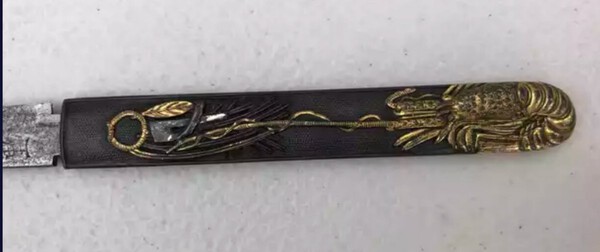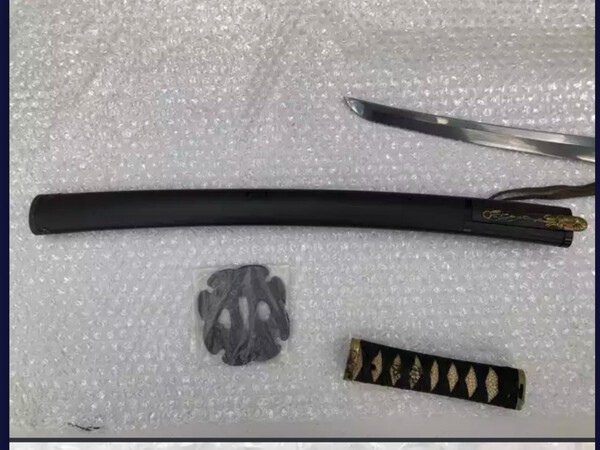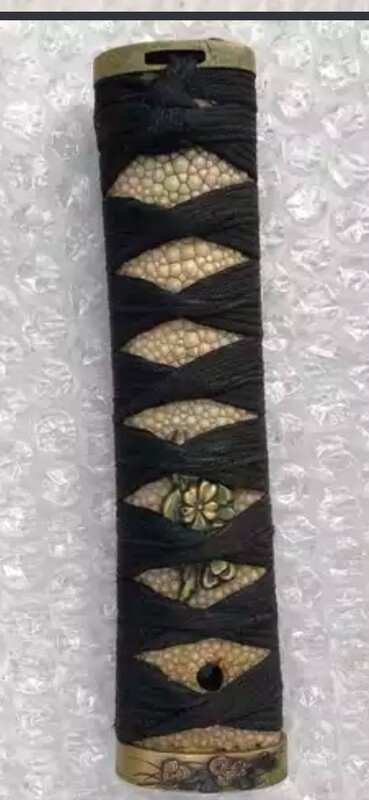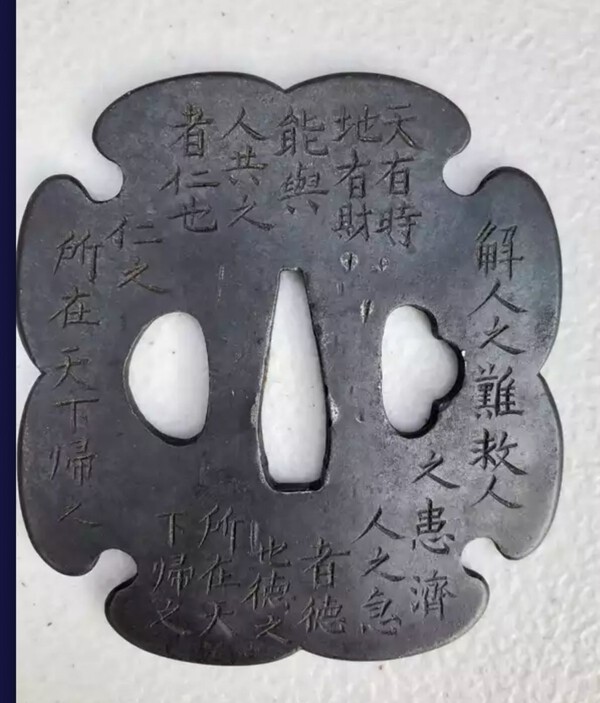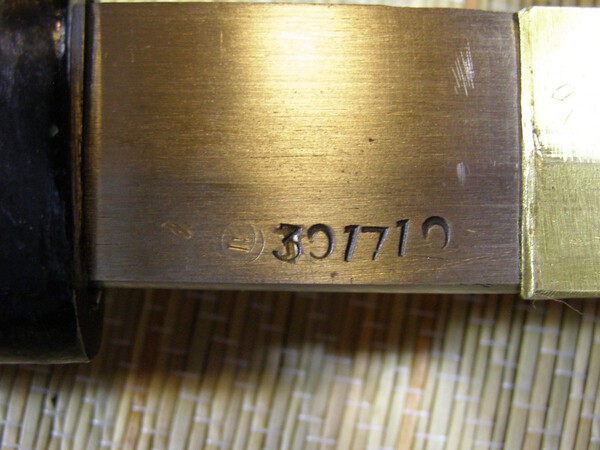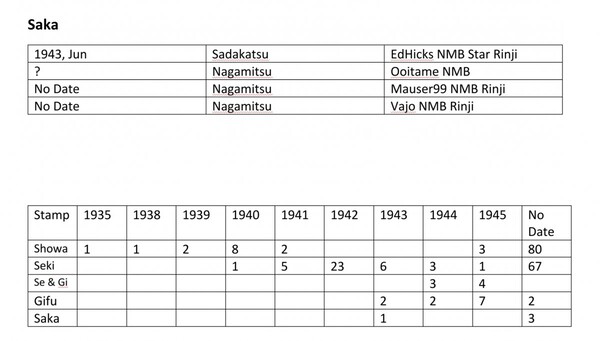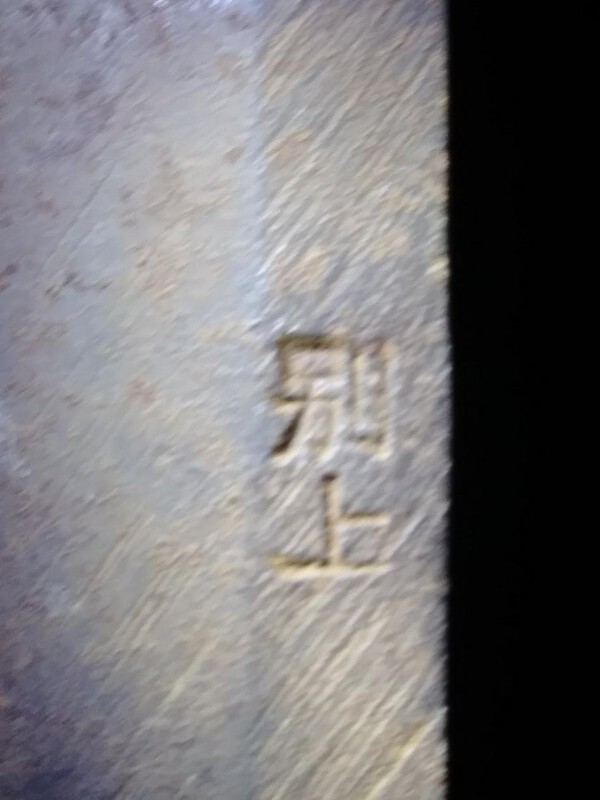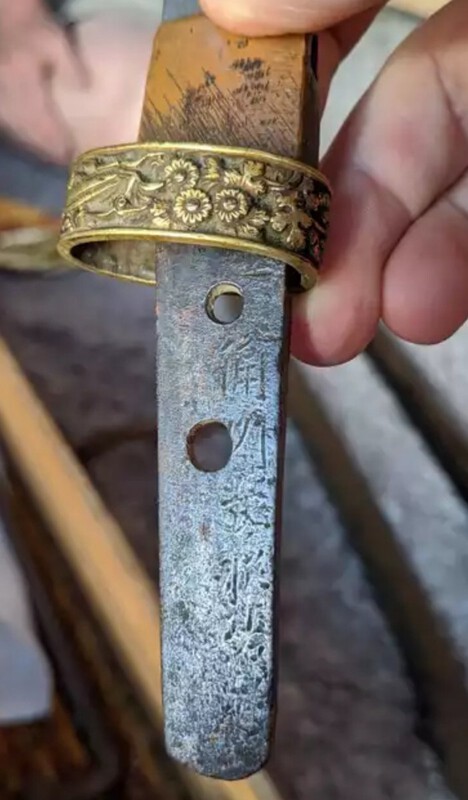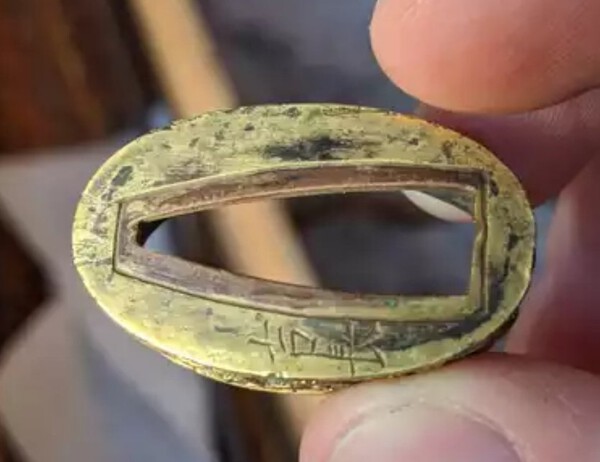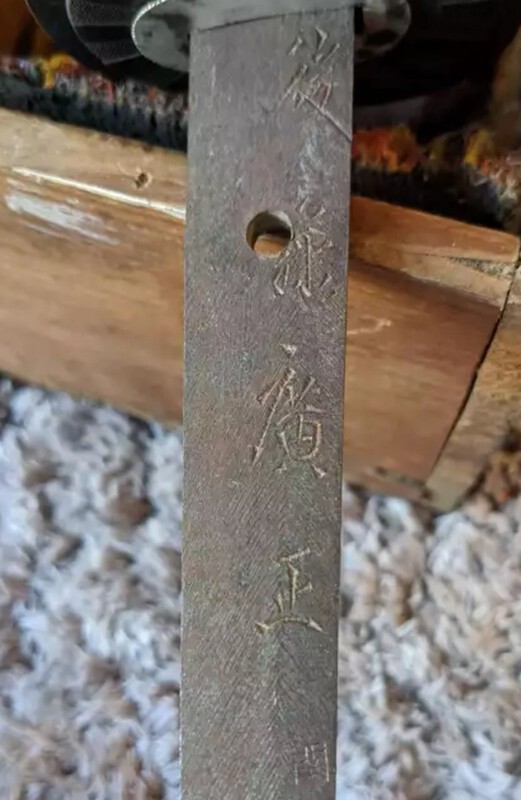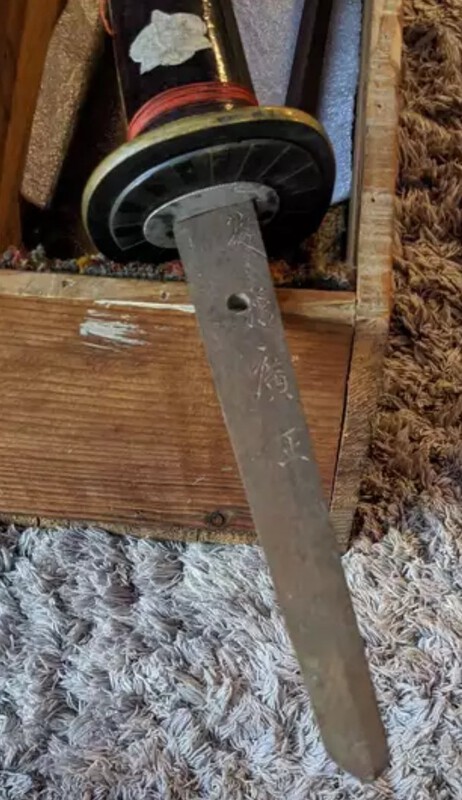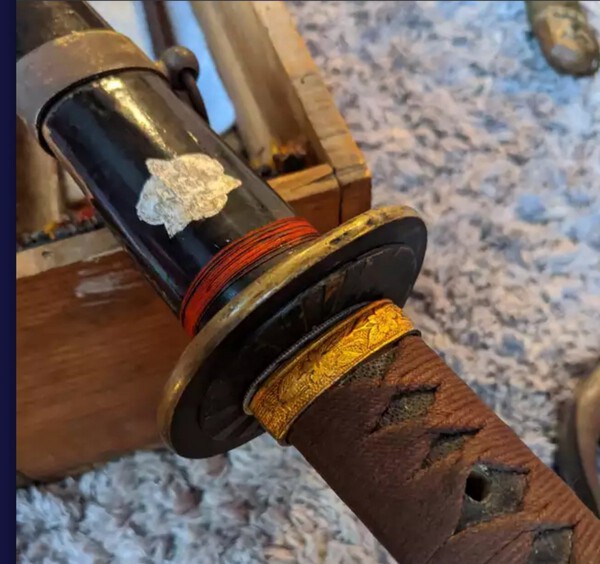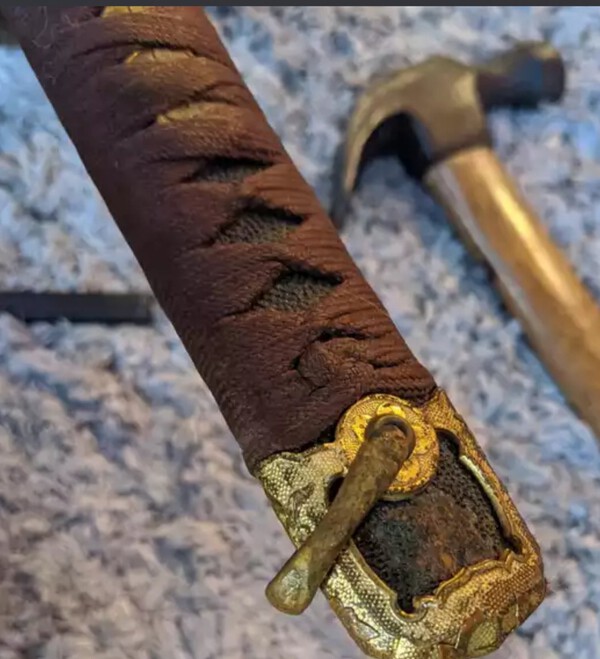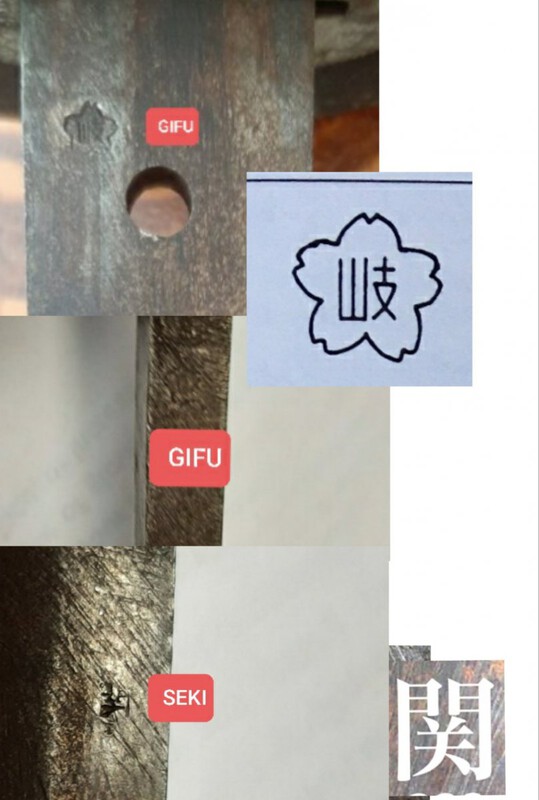-
Posts
13,036 -
Joined
-
Last visited
-
Days Won
155
Content Type
Profiles
Forums
Events
Store
Downloads
Gallery
Everything posted by Bruce Pennington
-
I've updated the charts with the Fuller Survey data. Both the Cox and Fuller surveys used vast numbers of oshigata (Cox 426; Fuller 920). Cox stated that half (213) of those observed had stamps. Fuller didn't say, but assuming his was the same, then only 16% (77) of the Fuller blades, with stamps, were dated. 21% (44) of the Cox blades, with stamps, were dated. Most stamped blades are without dates. Small changes: -- We see a 3 year overlap of the Showa and Seki stamps - 1940 through May 1942 (which refines the previously held "early 1942" end of the Showa stamp). stamp survey (1).pdf
-
I have only seen (via pictures) one Meiji era Type 8, ever, but it was like the ones seen in Dawson's book, pages 30-31. He has a close one, thought to be custom made on pages 40-41, but there are differences. Of course, all Type 8s, 19s, and Kyugunto had multitudinous variations, so it is possible Dawson's is simply a shop variation of this model. But the short answer is - no haven't ever seen one. Interesting bit of history there!
-
But does it have a Saka stamp? interesting though, the kanji appears (blurry) to be the square,
-
It is interesting to see that a single Smith is using such a numbering system. I know we have seen numbers with other Smiths, but this is a pretty large number of blades he has been numbering.
-
Thanks Thomas and Eric! Eric- Thanks, another Nagamitsu. I'm sensing a trend!
-
Thanks Thomas! I told you my search skills are bad!!! So, Dave - After checking the thread, Nick didn't provide the document, simply quoted from something.
-
Dave, For the life of me, I can't find the thread this was discussed on Warrelics.
-
A waki with an undated blade, made by Masayasu of Bishu. Here: https://forums.gunboards.com/showthread.php?1164369-Help-with-A-Short-Samurai-Sword
-
Thanks Kyle, I was just about to update: Got 2 anonymous readings that both agree that it's: "別上 (betsu-jō) It is used on knives to indicate solid steel construction. I'm not sure what it means on swords, but it could plausibly have the same connotation."
-

translation Translation for alleged WW2 Officer Sword
Bruce Pennington replied to SomeAussie's topic in Translation Assistance
-
Yes, Dave, that's a good example. No stippling on the kabutogane and haikan (ashi), and blackened. To be in full compliance, there would be no blossoms on the fuchi and koiguchi either, but like you say, they were using what they had at the time. Nice one Dave!
-

Sukekuni Gifu Rinji Seishiki
Bruce Pennington replied to Possumcop's topic in Military Swords of Japan
Sam, One of the guys who know swordsmiths would have to answer that for you. I'm afraid that's an area I have never gotten to know. Hopefully someone will step in and help you on that. As I understand it, though, your answer would be "yes" as a different signature of the same name would mean it was made by a different smith. I do find it interesting, though, that the bottom kanji appear to be written in what we call "script", versus "printing". (there's a word for that in Japanese writing), and it COULD be the same boxed kanji, just in script not print. But now you've got me blathering about stuff I don't know! -
Breaking news on late-war Type 95 stamps in a circle! Often seen on Jinsen made blades, they are an empty circle, a circle with 1, 2, or 3 horizontal lines inside, and they are Category marks for fitness for combat. The circle with 2 lines is a down-grade, "not for combat use", but can be used for training, schools, etc. Comes from new revelations on Warrelics, here: https://www.warrelics.eu/forum/Japanese-militaria/evolution-Japanese-army-steel-helmet-1918-1945-revised-expanded-version-589930-11/ Here is a blade with the Jinsen "He" and beside it is a circle with 2 lines.
-

Ancestral blades in gunto mounts
Bruce Pennington replied to Babu's topic in Military Swords of Japan
Hi guys! If I'm missing something, let me know and I'll butt out, but I checked the original post and even back-tracked some of Adam's inquiries in the For Sale forum, and I don't see where the idea came from that he intends to put the blade in home-made, or Bubba-job fittings. If I understand correctly, his intent is to get period fittings from the era of the blade for a re-fit. As a WWII enthusiast and shingunto collector, MY preference is to keep the gunto in WWII period correct fittings, but even at that, I've re-fitted some of my gunto that were missing parts. I've "modified" the condition of the gunto from it's arriving condition into my hands. If you are determined to re-fit, Adam, I would keep the WWII fittings along with the re-fitted blade, just as everyone does when they put a blade in shirasaya. That way the "story" of the blade can travel with it down the line. But even after saying that, I realize that all the fittings this blade wore over 250 years aren't traveling with it today, are they? None of the original owners would have thought that way when the blade was re-fitted. We think that way now because we are historians as well as collectors and are trying to preserve the history. Also Adam, we have all seen the horrors that certain "dealers" (to use that term loosely) have done to wonderful blades and gunto. So, none of us want to see that happen. If you re-fit, and intend to sell, your owe it to future owners, as well as to the blade, to tell the whole story of it's fittings. -
Got another one from this thread: It has standard tsuka hardware, but the roughly made, black painted saya (normally covered by leather). I'd like to add this to the discussion on Warrelics, but cannot find it there. Anyone have the link to that discussion?
-
Thanks Ray and Steve for the translations!
-
Posting the survey worksheet for those interested. Getting more Saka blades (4) and 3 of them are Nagamitsu. They are all in Rinji-seishiki fittings. Only the Sadakatsu is star-stamped. One Nagamitsu is in double-release button saya. I now have a kiagunto, mei: Goto Hiromasa, with a large Seki stamp. I know the large ones are out there, and I recall some other kaigunto with the stamp, but it will take some time to dig them out of the previous posts. stamp survey (1).pdf
-

Does anyone know.....
Bruce Pennington replied to Dave R's topic in General Nihonto Related Discussion
Ha! I was on the NMB Military Swords forum for YEARS before I even found out there were other forums on NMB! 😳 -
Looking for a translation on this. I'm afraid I can't remember where I got it. It's an old photo in my stamps files. It appears to be a stamped mei, though it could be something on a nakago mune, hard to tell from the angle. Any help? Thanks guys!
-
-
That's cool Mike! If you don't get a quick translation of the smith names, take them over to the Translation Assistance forum and they're pretty fast with replies here: http://www.militaria.co.za/nmb/forum/15-translation-assistance/ Your Type 97 kaigunto (navy officer sword) looks like it was made late in the war, likely 1945, by the saya (scabbard). They originally had a leather cover over the black painted wood. Largest Seki stamp I've ever seen! I hope you don't mind, but I'm posting some of the pictures for posterity. Over the years, some of the imgur links disappear.
-

Wet, dirty Saya Liners
Bruce Pennington replied to Bruce Pennington's topic in Military Swords of Japan
Bradley, If you're talking about NCO 95s, there is a single screw holding the saya throat in place. Remove the screw and throat and if you're lucky, the liner slide right out. About half of mine came out easily. The stuck ones are often stuck at the top/opening as that is where the majority of the oils get absorbed. I've been able to slide a very thin knife blade between the liner and the saya wall enough to loosen them. Even with that, I've sometimes had to pincer the liner with the knife on one side and a flat screw driver on the other to pry a stubborn ones out. I've had good luck doing it so far. Almost all of my officer saya liners have refused to come out. I've only had success with one and it was a combat saya with leather cover. -

Sukekuni Gifu Rinji Seishiki
Bruce Pennington replied to Possumcop's topic in Military Swords of Japan
Sam, You migh already know this but the three stamps are Gifu (x2) and Seki. Blade date is May 1945. Someone expert on smiths will have to help with your Sukekuni question. -
Eric, Could I get pics of the stamp and mei for my survey?
-
Jeff, Could we get pictures of both sides of the nakago (tang)? I'd like to add your blade to my stamp survey.


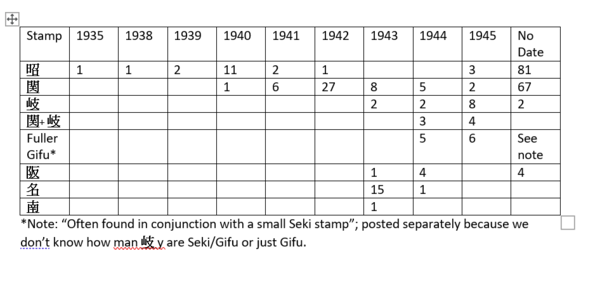

.thumb.jpg.b90ade9e71386874d7db2e8dd66ae349.jpg)
.thumb.jpg.9307f38cf94d46a4fbefcf5b82a05502.jpg)
.jpg.3864d713769ddc7e38ed86238b55db63.jpg)
(2).thumb.jpg.1bb417dc0950cd0248283bbe5f69bf68.jpg)


